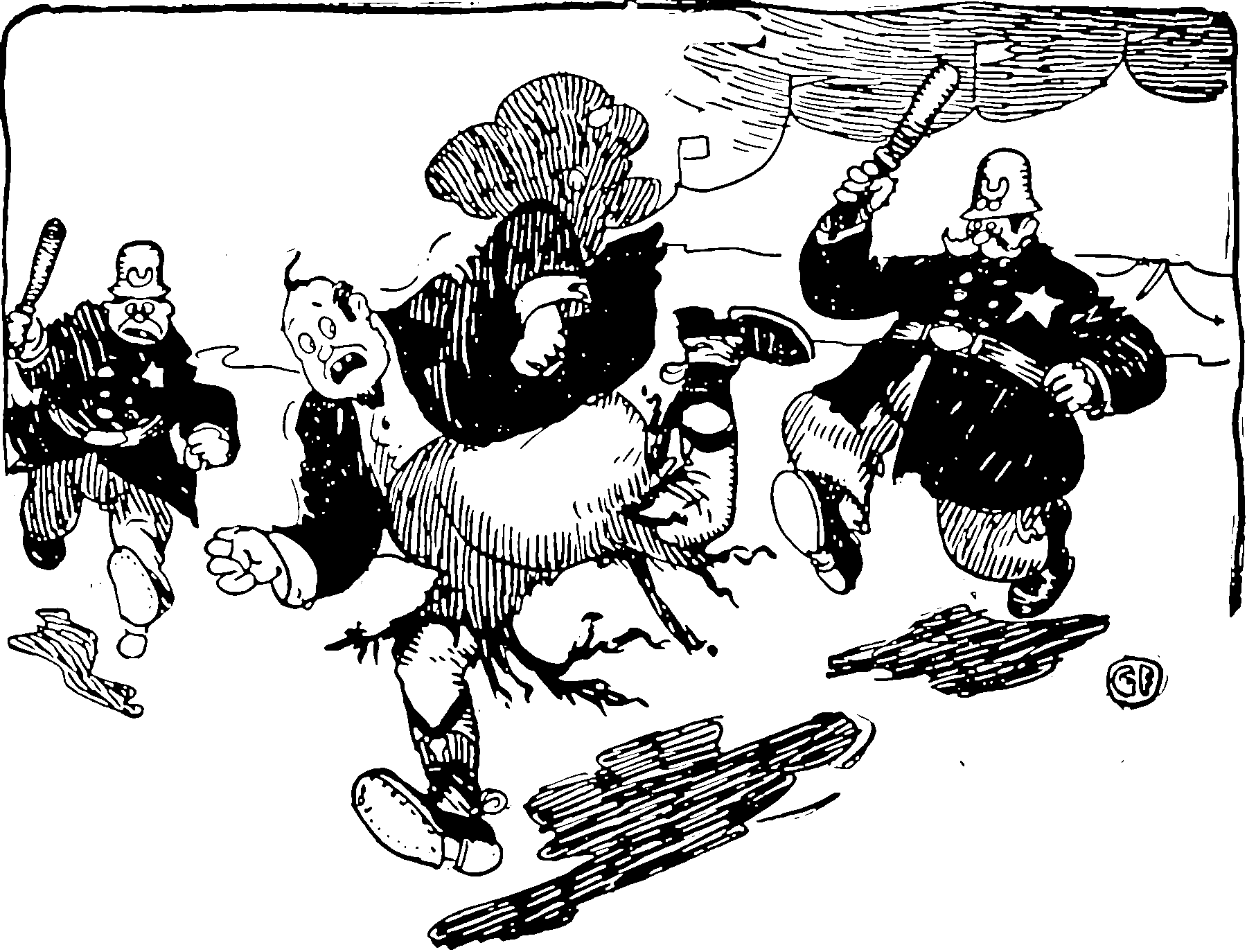Institutions for angels
Adverse selection in social movements
May 1, 2021 — November 24, 2024
Suspiciously similar content
A notebook for an idea that is not exactly rocket science, but which I will write down because it is empirically hard to notice when I am caught up in it myself.
Twin to institutions for devils.
Something that bitcoiners and social justice activists have in common: Their movements are large, with some powerful and possibly good ideas, and are perpetually judged by the worst of their adherents. Moreover, these movements have many problematic adherents because they have few gatekeepers and inclusive ideologies, and they are structured not to exclude people who adopt the trappings of the movement but in fact undermine or dilute its values.
These are the problems of institutions for angels, which is to say, institutions that work great if everyone is an angel but are not robust against the presence of devils. Open membership groups are the archetypal institutions for angels.
There are pluses to openness — an institution that welcomes absolutely anyone who fits its membership can provide community, support and care to people who are otherwise marginalised. The price is that it is vulnerable to elite capture and free riding.
Much can be understood about the modern world if we remember that in each group we are in, unless there is a strong system to prevent it, the de facto spokespeople will be the shrillest and least reasonable among us. More can be explained by the idea that when you have nothing of your own, you can at least rally the group around you.
Let me reason about this for a moment, because contemporary manifestations of this phenomenon are interesting.
1 Why we like them
One flavour of Dunning-Kruger thinking: Our tendency to imagine that people like us are good people its ok to have an institution that only works if everyone in it is good .
Experience teaches us that this goes off the rails in various ways. Even if we all mean well, we need institutions robust against making mistakes because we might not all be omnicompetent. Even if we all mean well and are perfectly competent, an institution with few checks and balances will fail to give us the feedback we need to do the right thing. Even if we all mean well and are competent and omniscient, we are still not safe, because systems designed for angels attract devils who can exploit them and incompetents who break them.
Here are some more recent case studies:
2 We are probably recruiting the wrong people
I think that even with good intention we should be wary of assuming that the recruits to our movement are angels because it is likely that we are acquiring people who turn up for precisely the wrong reasons, which is to say, the wrong people.
Invasive arguments are effective at getting people to join your movement if it is dominated by growth/recruiting. In fact, even if you do not wish to have a rage-based recruiting strategy as a movement founder, these arguments may yet come to dominate if incidental rage-based recruiting outpaces other means. We can also manage that rage-based recruiting might even lead to the departure of non-rage-based recruits from the movement since peaceable sorts may find it unpleasant to hang about with militant hardliners on their weekends off. This might be one of the factors leading to the tendency of revolutions to devour their children. Possibly related: purity cascades.
🚧TODO🚧 clarify If I need to recruit on the internet, suppose that means I need prominence and the cheapest way to get air time is to have a movement where the most visible proponents will specialize in public denunciations and outrage. Even if I do not want to recruit that way, my movement may gain members that way unless I can tightly control how my members recruit. Even if I don’t want to recruit that way and I can onboard members with strong social norms against rage-based recruiting, my opponents could just as easily rage-recruit for me — there is certainly evidence that this has been attempted, if not reliable quantification of how effective this is.
What does that mean about what I should expect to see in social movements generally? Constant weed-like growth in the most toxic wing of any movement?
All else being equal, it seems likely that the internet is disproportionately likely to recruit the least useful and even counterproductive membership. On that intensely contested ground, virtue signalling is selected for at the expense of effortful activism. Clicktivism reproduces much faster than any face-to-face organising can. You need both, in all likelihood, but the needle on the dial tilts towards virtual signalling. Further, it seems likely that within the category of virtue signalling, the types of signal that will get most traction are likely to be the most infuriating ones (shaming, policing without consent, trolling), alienating the opposition or creating new oppositions.
I know that accusations of virtue signalling have acquired a conservative valence on the internet, but to be clear, I doubt that this dynamic is restricted to either conservative or progressive politics.
3 Radical inclusiveness
There is a role for radically inclusive movements, but I think we insufficiently risk manage them. Why?
4 Geeks, MOPs, Sociopaths and beacons
Interesting model of subcultural dynamics: Geeks, MOPs and Sociopaths.
5 Munchausen syndrome, modern variants
See Munchausen syndrome.
6 Elite capture
Olúfẹ́mi O. Táíwò, On the Uses and Abuses of Identity Politics:
Elite capture, he explains, is a concept that emerged from the study of developing countries. It initially referred to the tendency of the upper class to gain control over foreign aid; in other words, the rich get richer. But the concept has also come to encompass the ways that elites appropriate political projects and monopolize attention.
Elite capture, Táíwò says, is “not a conspiracy” but rather “a kind of system behaviour.” Systems are a major theme of the book, a theme Táíwò develops by drawing on the philosophy of games. Another motif is his impatience with the symbolic gestures and efforts to avoid “complicity” that have come to take precedence, in his view, over actual political outcomes.
See also his Boston Review piece: Identity Politics and Elite Capture.
7 Purity cascades
c.f. Schelling-Goodhart.
Which norms are stable? Which are at the start of slippery slopes? I used to think no incremental change to group norms could lead to runaway extremism (all slippery slopes are bullshit), but I think I was demonstrably wrong about that. The question is about what are the exact dynamics that encourage and discourage extremes. I have witnessed too many people I know tumbling down the conspiracy radicalisation pathway and seen social norms shift in ways that were not intended at the start. Sometimes they are destructive outcomes; sometimes just a waste of time, e.g. Euphemism treadmills.
We have famous examples of escalation in purity tests in movement before. People like citing the French Reign of Terror; things can go off the rails. No one is killing anyone over microaggressions, though.
Regina Rini relates this to control systems in a different metaphor‚ air conditioner settings.
In both cases we are left to think about slack and Moloch.
Interesting case study: The OwnVoices Movement and the policing of who is allowed to present which identities in their characters. Who gets to define authenticity and appropriation?
8 Hierarchies without org charts
A classic early essay in this area is Jo Freeman, The Tyranny of Structurelessness:
… to strive for a structureless group is as useful, and as deceptive, as to aim at an “objective” news story, “value-free” social science, or a “free” economy. A “laissez-faire” group is about as realistic as a “laissez-faire” society; the idea becomes a smokescreen for the strong or the lucky to establish unquestioned hegemony over others. This hegemony can be so easily established because the idea of “structurelessness” does not prevent the formation of informal structures, only formal ones.
I would refine the critique there a little in light of the last few decades of research, but yeah, anyone who has ever tried to organise to make the world better recognises this feeling, I suspect.
Nöllke (2024) is a guidebook for playing the game of climbing invisible hierarchies.



